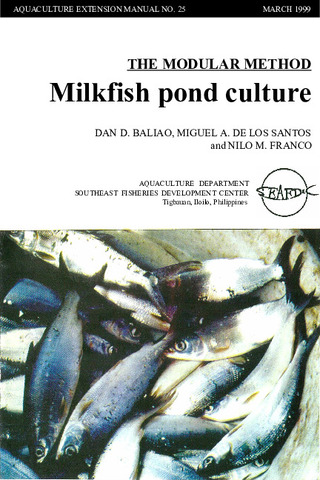Induced gonadal maturation and rematuration in milkfish: Limited success with chronic administration of testosterone and gonadotropin-releasing hormone analogues (GnRH-A)
| dc.contributor.author | Marte, Clarissa L. | |
| dc.contributor.author | Crim, Laurence W. | |
| dc.contributor.author | Sherwood, Nancy M. | |
| dc.date.accessioned | 2013-01-14T02:15:45Z | |
| dc.date.available | 2013-01-14T02:15:45Z | |
| dc.date.issued | 1988 | |
| dc.identifier.citation | Marte, C. L., Crim, L. W., & Sherwood, N. M. (1988). Induced gonadal maturation and rematuration in milkfish: Limited success with chronic administration of testosterone and gonadotropin-releasing hormone analogues (GnRH-A). Aquaculture, 74(1–2), 131–145. | en |
| dc.identifier.issn | 0044-8486 | |
| dc.identifier.uri | http://hdl.handle.net/10862/1288 | |
| dc.description.abstract | Nine experiments were conducted to investigate the influence of chronic administration of testosterone (T) and gonadotropin-releasing hormone (GnRH) analogues on first maturation of 4- to 6-year-old fish and rematuration of 6- to over 9-year-old spent/regressed fish. Implantation of T or T in combination with luteinizing hormone-releasing hormone analogue (LHRH-A) had no marked effect on maturation rate of 4-year-old milkfish. The percentage of maturing fish was low and similar to controls in Experiment 1 (T, 31–35%; control, 35%) and Experiment 3 (T, 13%; T plus LHRH-A, 28%; control, 22.2%). Most of the 4-year-old maturing fish were males; maturing females were obtained only from the T-implanted groups in Experiment 1. In Experiment 3, T-implanted maturing females were able to retain yolky eggs whereas maturing control females did not, indicating that testosterone may have enhanced vitellogenesis and maintained the integrity of vitellogenic oocytes. Tank-reared maturing 4-year-old females, about half the size of older first maturing females, were induced to spawn. This is the first case of maturation and spawning of 4-year-old milkfish reared in tanks. As in Experiments 1 and 3, the percentage maturation of spent fish in Experiments 7 and 8 was similar for T-implanted and controls. On the other hand, the 4-year-old immature fish in Experiments 2 and 4, the 5- and 6-year-old immature fish in Experiments 5 and 6, and the spent 6-year-old fish in Experiment 9 were immature or regressed throughout. The factors which may have influenced the results of these experiments include age and reproductive history of the fish, timing of hormone implantation, experimental and holding conditions, and stress. | en |
| dc.language.iso | en | en |
| dc.publisher | Elsevier | en |
| dc.subject | Chanos chanos | en |
| dc.title | Induced gonadal maturation and rematuration in milkfish: Limited success with chronic administration of testosterone and gonadotropin-releasing hormone analogues (GnRH-A) | en |
| dc.type | Article | en |
| dc.identifier.doi | 10.1016/0044-8486(88)90093-2 | |
| dc.citation.volume | 74 | |
| dc.citation.issue | 1-2 | |
| dc.citation.spage | 131 | |
| dc.citation.epage | 145 | |
| dc.citation.journalTitle | Aquaculture | en |
| seafdecaqd.library.callnumber | VF SJ 0235 | |
| seafdecaqd.databank.controlnumber | 1988-22 | |
| dc.subject.asfa | animal physiology | en |
| dc.subject.asfa | testosterone | en |
| dc.subject.asfa | aquaculture | en |
| dc.subject.asfa | culture tanks | en |
| dc.subject.asfa | rearing techniques | en |
| dc.subject.asfa | sex hormones | en |
| dc.subject.asfa | sexual maturity | en |
| dc.subject.asfa | sexual reproduction | en |
| dc.subject.asfa | spawning | en |
| dc.subject.asfa | analogs | en |
| dc.subject.asfa | induced ovulation | en |
| dc.subject.scientificName | Chanos chanos |
このアイテムのファイル
| ファイル | サイズ | フォーマット | 閲覧 |
|---|---|---|---|
|
このアイテムに関連するファイルは存在しません。 |
|||
このアイテムは次のコレクションに所属しています
-
Journal Articles [1258]
These papers were contributed by Department staff to various national and international journals.



